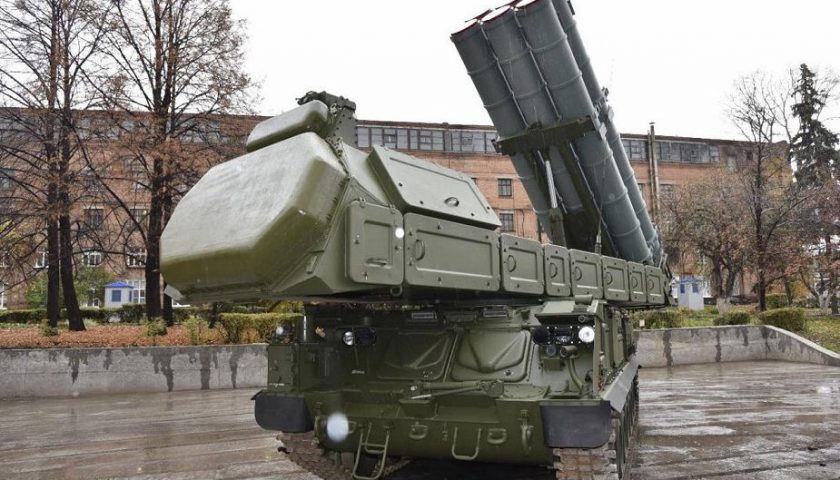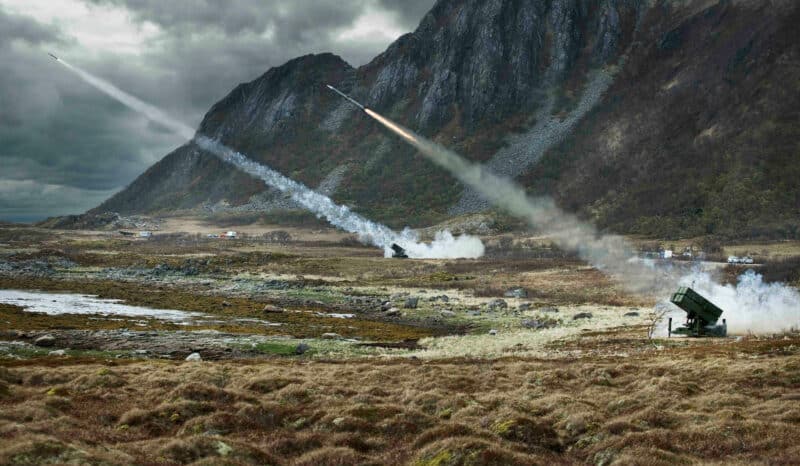In terms of anti-aircraft defence, the means employed vary considerably according to the resources but also the doctrines of the armies. However, two major doctrines have faced each other since the appearance of anti-aircraft missiles in the mid-50s. The Soviet doctrine, applied today by Russia but also by China, relies on a 5-level multi-layered defense, with anti-ballistic capability at very high altitudes, represented by the S-300 PMU2 and by the new S-500 coming soon, a long-range anti-aircraft and low-altitude anti-ballistic capability (inf 50 km) represented by the S-400, a medium-altitude and medium-range defense attributed to the Buk systems and the new S-350, a short-range defense with the TOR and the Pantsir, and finally a very short-range low-altitude defense consisting of infantry anti-aircraft missiles and anti-aircraft guns. This approach makes it possible, theoretically, to opacify the airspace in the face of a large number of threats, including in the face of saturating threats.
The US Army, for its part, relies on a much lighter 3-level structure, made up of the THAAD very high altitude anti-ballistic system, the Patriot long-range anti-aircraft and anti-ballistic system, and SHORAD systems. (Short Range Air Defense) and MANPADS (MAN-Protable Air Defense System) for protection at very short range, mainly around the Stinger missile. Indeed, throughout the Cold War, and even after, the American armies, and with them those of their allies, considered that air defense was primarily the responsibility of air forces and in particular of fighters, relying for this on high-performance aircraft available in quantity such as the F-15 and later the F-22. The fact is, during the post-Cold War wars, particularly in Iraq and the former Yugoslavia, the supremacy of the US Air Force and its allies in the skies was unchallenged, to the point that anti-aircraft defense seemed, if not superfluous, at least noticeably less critical than for other countries.

For Russia, and to a lesser extent for China, the latter striving to implement an intermediate doctrine, air supremacy is in fact not a pre-requisite for military action, firepower being forward due to artillery. In fact, its doctrine is not aimed so much at seizing air supremacy as at preventing the adversary from doing so. Paradoxically, the application of this doctrine has been demonstrated not by the Russian armies, but by their Ukrainian opponents, who since the start of the conflict have managed to prevent the Russian air forces, which are nevertheless considerably more powerful, from seizing air supremacy over the territory, relying almost exclusively on Soviet-made systems such as the S-300, the Buk and the Tor, and employing fighters only as a last resort, cutting undercuts speculation about the supposed ineffectiveness of Russian anti-aircraft systems themselves. Was it the Ukrainian successes that inspired US Army strategists? The fact is, within the framework of the 2023 budget plan, it requested appropriations from Congress, specifically to create a fourth layer in its anti-aircraft defense, the one that is provided today by the Buk system in Russia and in Ukraine, to counter medium-range and medium-altitude threats on the Guam base.

The rest of this article is for subscribers only
The Classic subscriptions provide access to
all articles without advertising, starting at € 1,99.
Newsletter subscription
Register for the Meta-Defense Newsletter to receive the
latest fashion articles daily or weekly


[…] […]